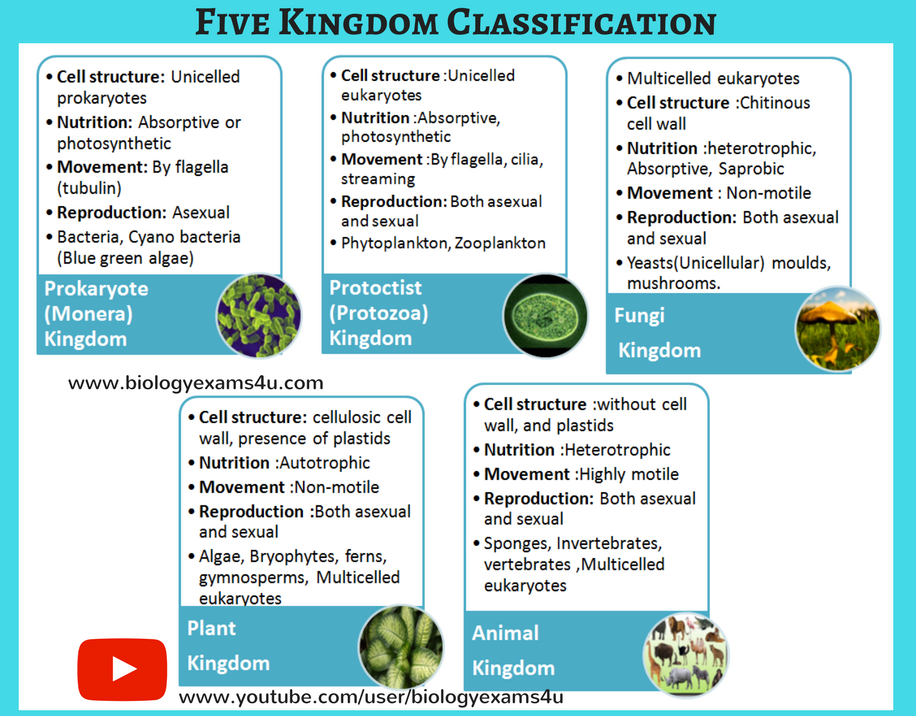Five kingdom Classification proposed by R. H. Whittaker in 1969. The five kingdom are
1. Kingdom
Prokaryotes (Kingdom Monera): The Kingdom of Prokaryotes
- Monera includes bacteria, cyanobacteria, mycoplasma and actinomycetes.
2. Kingdom
Protists (Kingdom Protozoa) :The Kingdom of Unicellular Eukaryotes)
- Protists includes diatoms, euglenoids, dinoflagellates, slime moulds and protozoans.
3. Kingdom Fungi:
The Kingdom of Multicellular Decomposers
- Fungi includes multicellular or multinucleated achlorophyllous spore producing eukaryotic organisms like Pencilium, Rhizopus, mildews, mushrooms, rusts, morels, puff balls, bracket fungi etc.
4. Kingdom Plants
(Kingdom Plantae) : The Kingdom of Multicellular Producers
- Plantae includes photosynthetic multicellular organisms i.e., algae, bryophytes, pteridophytes, gymnosperms and angiosperms.
5. Kingdom Animals
(Kindom Animalia) :The Kingdom of Multicellular Consumers
- The main group represented in the animal kingdom are sponges, coelenterates, annelids, arthropods, molluscs, mammals, reptiles, fishes, amphibians and birds.

